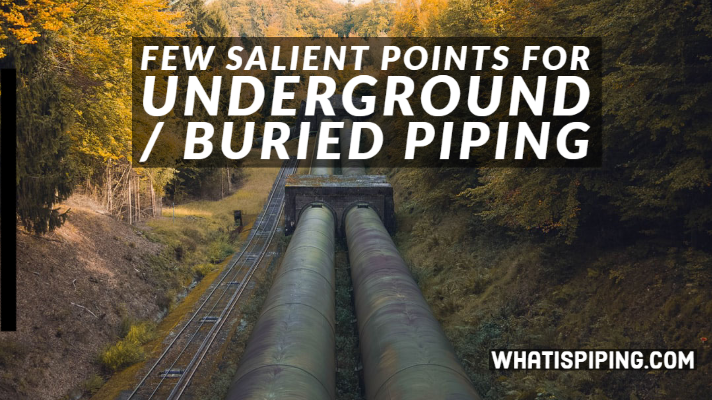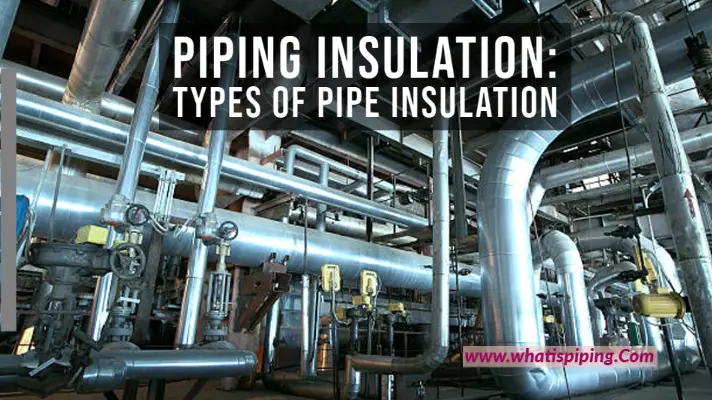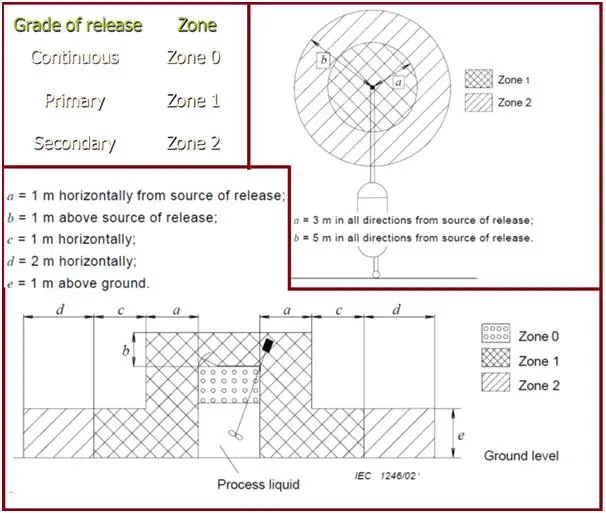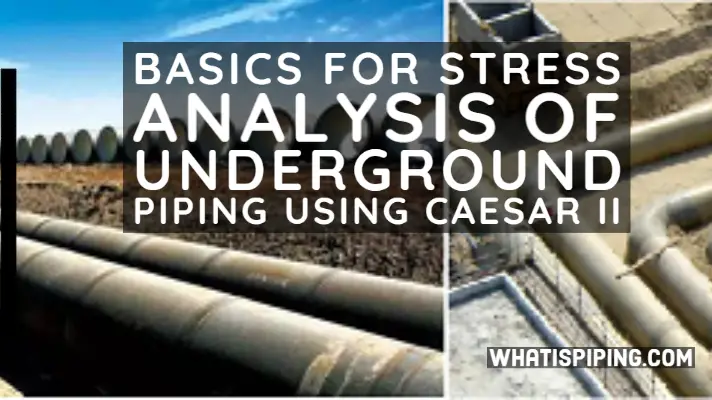In refineries, chemical, and petrochemical industries we frequently find that pipes are insulated. All of these pipes are aboveground. So, sometimes a question arises in mind “does the underground pipe need to be insulated?”. Underground or buried pipes sometimes require insulation and sometimes do not. In this article, we will explore more regarding underground piping insulation.
Examples of Underground Piping Systems
Underground pipes are laid below the grade line. Common examples of underground pipes are:
- – Cooling water (with line sizes normally ≥18″ NB)
- – Fire-Water
- – Contaminated Rainwater Sewer from the process catchment area. (CRWS)
- – Oily Water Sewer (OWS)
- – Liquid Effluent that runs to the Effluent Treatment Plant.
- – Closed Blow Down system (CBD)
- – Sanitary system
- – Storm Water
- – Equipment drainage to slop tank
- -Fuel oil piping
- -Water, Crude, Gas, or Oil Pipelines
The following materials are used commonly for the construction of piping systems & their advantages over the fabrication of underground pipe are listed below:
- Carbon steel—closed-drain systems, cooling water, and fire water
- Stainless steel—closed drains—chemical and corrosive service
- Cast iron—used for oil-water drains and stormwater (hub and spigot fittings)
- Ductile iron—used in Process water (its stress value is higher than that of cast iron) (hub and spigot fittings)
- Concrete pipe—surface drainage, and for 15″ and bigger pipes
- Fiberglass-reinforced plastic pipes— These mostly are used for low-temperature, corrosive service, and pressure systems.
- PVC—corrosive service
- Vitrified clay pipe- These gravity drain systems can’t be used under roads or even when subjected to significant loads (the maximum operating temperature for them will be 200°F/93°C)
- Glass Pipe—used main for floor drains in process plants, usually acid service
Most of the above-mentioned lines are normally low-temperature lines. They do not carry fluids that are either cryogenic or have very high temperatures similar to above-ground piping systems. So, in principle, buried or underground pipes do not need to be insulated similarly to aboveground piping systems.
However, moisture and corrosion are constantly threatening the underground piping. Even though corrosion-resistant coatings are applied on the pipe surfaces, still the exposure to water and chemicals in the soil creates many problems in the buried system. Insulating the underground pipe with the correct materials can provide an additional measure of protection for them. This is one of the main reasons for insulating underground piping. Also, sometimes chilled district cooling systems and steam networks are laid underground which needs insulation.
Purposes of Underground Piping Insulation
The major benefits that an insulated underground piping system provides are:
- It keeps the system safe. A properly insulated underground piping can prevent condensation, energy loss, vapor leaks, and temperature regulation.
- Underground piping insulation preserves the pipes by restricting direct contact from moisture and corrosion. It increases the operating life span of buried pipes.
- As the buried insulation faces the soil and corrosive environment, the main pipe does not suffer major problems. Hence, the maintenance and repair action reduces. The underground insulation gets damaged but they are cheaper as compared to the primary pipe. So, there is a huge saving in the budget over the complete span of the pipe.
- Reduces heat loss from pipes.
- Prevents the freezing of the liquid it carries through the pipe.
- Prevents direct contact with unlike metals that would cause electrolyte action.
- Prevents contact with concrete and other materials that can damage the parent pipe surface.
Underground Pipe Insulation Materials
The leading product under underground use is the Armaflex Tuff coat as it has high water vapor diffusion resistance and low thermal conductivity. Armaflex class o nitrate foam – this insulation is the industry-leading underground insulation. That consists of an additional wrap-around self-seal plastic coating.
Mineral powder insulation, perlite insulating concrete, gilsulate, and cellular glass insulation are some of the other examples of excellent insulating materials for underground piping systems.
In general, all underground piping insulation materials should possess the following properties:
- Good mechanical strength for direct burial.
- High corrosion resistance (Resistance against soil moisture and soil acids)
- Long-term insulation efficiency
Factors affecting the selection of Underground Piping Insulation System
The design and selection of an ideal underground pipe insulation system depend on factors like:
- Type of piping or pipeline system: hot or chilled water, steam, or other
- Operating temperature of the fluid that the main pipe will carry
- Pipe OD and length
- Depth of pipe cover
- Soil type, bearing strength, electrical potential
- Location of water tab
- Road Crossing and Traffic load, etc
Some piping systems in the ground are required to be double-walled or secondarily contained. There will be a primary pipe and there will be a secondary pipe over the primary pipe and the purpose of that is to if the primary pipe systems fail, they are a backup plan or another layer of pipe to contain it.
Sometimes, underground pipe jacketing is also widely used in place of buried insulated piping.
Can pipe insulation be buried?
Placing the insulated piping and pipeline systems underground is one of the most practical methods of underground piping system installation. The need for costly tunnels is eliminated by this process which in turn, speeds up the buried piping installation.
What is a Pre-insulated underground pipe?
Pre-insulated underground piping systems provide a better solution by avoiding the challenges of installing insulation. There are various options available for pre-insulated underground pipe systems. They are strong and durable and can work over a variety of temperature ranges.









Learned a lot
I’m curious about applications for buried stainless steel piping. In previous experience it didn’t make sense to bury stainless steel piping because the anti-corrosive properties are not effective and much more expensive than carbon steel. You would still have to apply an anti-corrosion coating/wrap to the outside of the pipe. My thinking is because the soil prevents air from getting to the piping and the anti-corrosion properties of stainless steel is made from the air forming a thin film on the pipe (passivation). I have had to bury insulated stainless steel before, but that was a special circumstance as it was in an extremely cold environment and very abrasive fluid. I’m not sure if I’m way off-base or not. Would love to get your thoughts on corrosion resistance in buried stainless steel pipe.